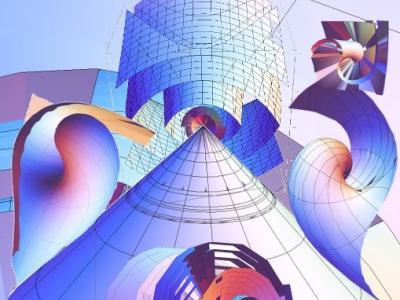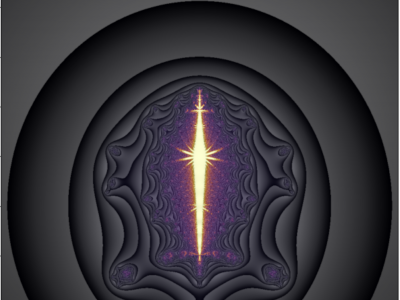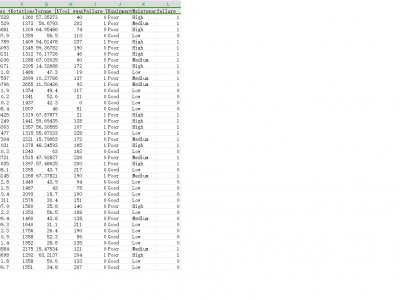Machine Learning
I met Yeshua Ben Joseph, Yahowah, the living Allaha in person in 2007, and this work, may it be entirely unto His grace.
The Cone of Perception 4th Edition Table of Contents
1. Introduction to the 4th Edition
2. The Meaning of Now
3. The Geometric Pattern of Perception Theorems
i. Math for Transforming a Circle into a Cone
a. Theorem 1 - Difference in the Circumferences of Two Circles
i. Lemma1 ii. Lemma 2 iii.Lemma 3 iv.Lemma 4 v. Lemma 5
b. Theorem 2 - Equilateral Triangle of Instantaneous Velocity = Average Velocity i. Lemma8
- Categories:
 61 Views
61 Views
Thanks be to Yeshua ben Joseph, Yahowah, the living One Allaha.
This work is a attempt to describe various braches of mathematics and the analogies betwee them. Namely:
1) Symbolic Analogic 2) Lateral Algebraic Expressions 3) Calculus of Infin- ity Tensors Energy Number Synthesis 4) Perturbations in Waves of Calculus Structures (Group Theory of Calculus) 5) Algorithmic Formation of Symbols (Encoding Algorithms)
- Categories:
 59 Views
59 ViewsThe Machine Failure Predictions Dataset (D_2) is a real-world dataset sourced from Kaggle, containing 10,000 records and 14 features pertinent to IIoT device performance and health status. The binary target feature, 'failure', indicates whether a device is functioning (0) or has failed (1). Predictor variables include telemetry readings and categorical features related to device operation and environment. Data preprocessing included aggregating features related to failure types and removing non-informative features such as Product ID.
- Categories:
 142 Views
142 Views
A group of 10 healthy subjects without any upper limb pathologies participated in the data collection process. A total of 8 activities are performed by each subject. The measurement setup consists of a 5-channel Noraxon Ultium wireless sEMG sensor system. Representative muscle sites of the forearm are identified and self-adhesive Ag/AgCl dual electrodes are placed. The signal (sEMG) recorded during an ADL activity is segmented into functional phases: 1) rest 2) action and 3) release. During the rest phase, the subject is instructed to rest the muscles in a natural way.
- Categories:
 66 Views
66 ViewsEste proyecto se desarrolló para optimizar el análisis de suelos agrícolas en cultivos de papa, con un enfoque en mejorar la precisión y accesibilidad de los diagnósticos de nutrientes esenciales (NPK) a través de tecnología de sensores. En primer lugar, se realizó la calibración de sensores industriales multiparámetro (CWT para NPK y CWT-multiparámetro), basándose en valores de referencia de laboratorios convencionales, lo que permitió configurar un marco de medición confiable.
- Categories:
 214 Views
214 Views
The SINEW 15 Biomarker dataset was extracted from the sensor data collected by a longitudinal study called Sensors IN-home for Elder Wellbeing (SINEW).
- Categories:
 37 Views
37 ViewsThis dataset presents the capacity fade data for eight Lithium Titanate Oxide (LTO) battery cells over progressive charge-discharge cycles. The measurements, recorded at intervals of 250 cycles up to 3500 cycles, track the aging effects on battery capacity over time. The aging procedure includes a rest period of 10 minutes between charging and discharging cycles. Each charging and discharging process was conducted with a constant current of 1 ampere (A). The maximum charge voltage was set to 2.75 volts (V), while the minimum discharge voltage was set at 1.30 V.
- Categories:
 190 Views
190 Views
This dataset contains a comprehensive V2X misbehavior dataset simulated using VASP, an open-source framework. VASP allows the simulation of diverse types of V2X attacks and works as a sub-module for Veins, a well-established open-source framework for running vehicular network simulations. Veins runs on an event-based network simulator OMNeT ++, and road traffic simulator SUMO. Data are collected from the Boston traffic network, which is a good candidate to represent real-world traffic mobility. We run VASP simulation for 3,000 simulated seconds to collect benign traces without any attacks.
- Categories:
 173 Views
173 ViewsInterference signals degrade and disrupt Global Navigation Satellite System (GNSS) receivers, impacting their localization accuracy. Therefore, they need to be detected, classified, and located to ensure GNSS operation. State-of-the-art techniques employ supervised deep learning to detect and classify potential interference signals. We fuse both modalities only from a single bandwidth-limited low-cost sensor, instead of a fine-grained high-resolution sensor and coarse-grained low-resolution low-cost sensor.
- Categories:
 394 Views
394 Views




